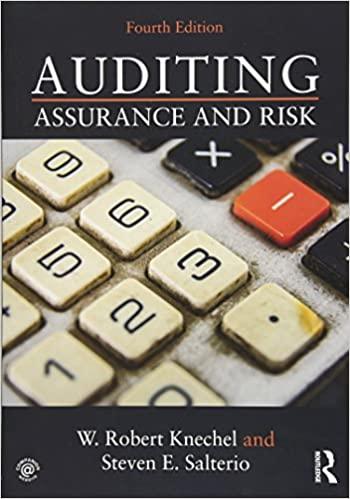Question
1) Describe the fraud triangle and the three elements of the fraud triangle? Provide examples? 2) What are the most common approaches that perpetrators use
1) Describe the fraud triangle and the three elements of the fraud triangle? Provide examples?
2) What are the most common approaches that perpetrators use to commit fraudulent financial reporting? What are the common types of fraudulent financial reporting? 3) Assume that you are interviewed by a student newspaper regarding the nature of accounting fraud. The reporter says, As I understand it, asset misappropriations are more likely to be found in small organizations, but not in larger organizations. On the other hand, fraudulent financial reporting is more likely to be found in larger organizations. How would you respond to the reporters observation? 4) a) What is professional skepticism? b) Why is professional skepticism helpful for detecting fraud? c) What are the key behaviors needed to successfully exercise professional skepticism during the performance of the audit? d) Why is it sometimes difficult for auditors to exercise appropriate levels of professional skepticism in practice? 5) Many consider the Enron fraud to be one of the most significant frauds of the early 2000s. a) Describe the various failures and environmental characteristics during this time that enabled the Enron fraud to happen.
b)What elements of the fraud triangle seem most relevant to the Enron fraud?
Step by Step Solution
There are 3 Steps involved in it
Step: 1

Get Instant Access to Expert-Tailored Solutions
See step-by-step solutions with expert insights and AI powered tools for academic success
Step: 2

Step: 3

Ace Your Homework with AI
Get the answers you need in no time with our AI-driven, step-by-step assistance
Get Started


